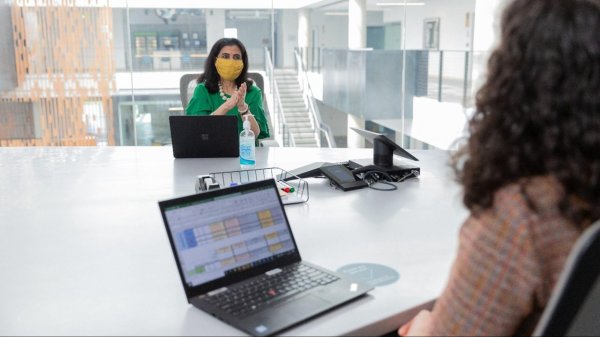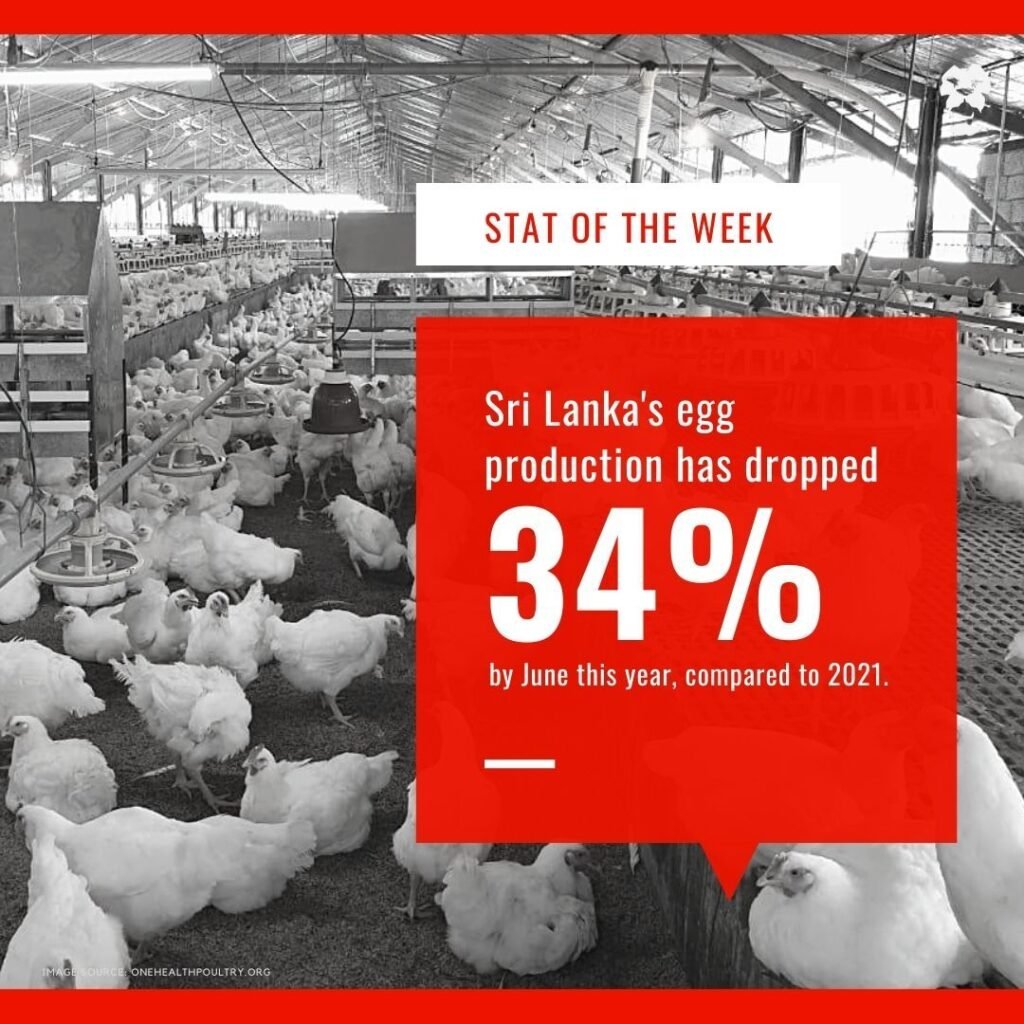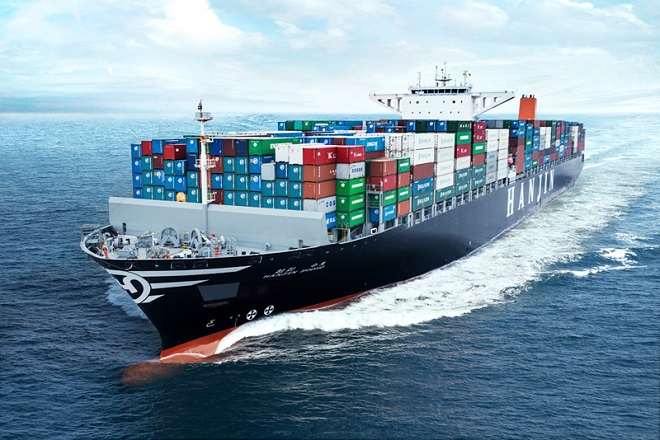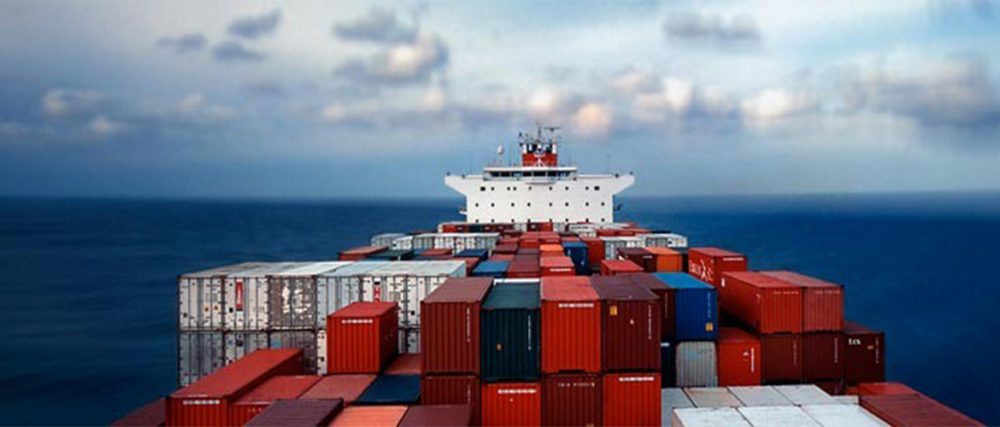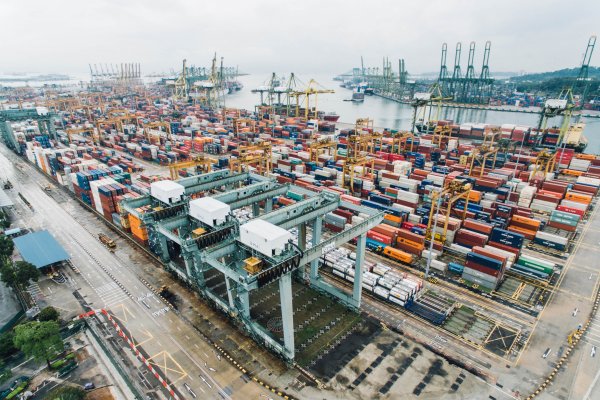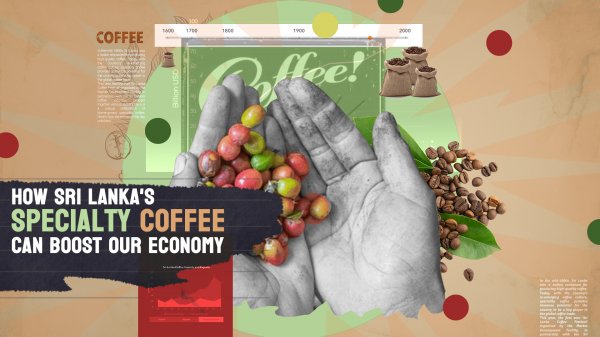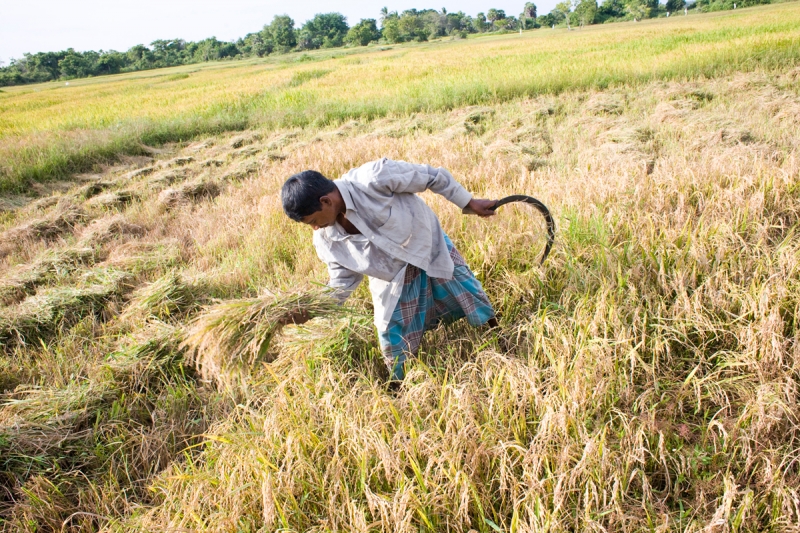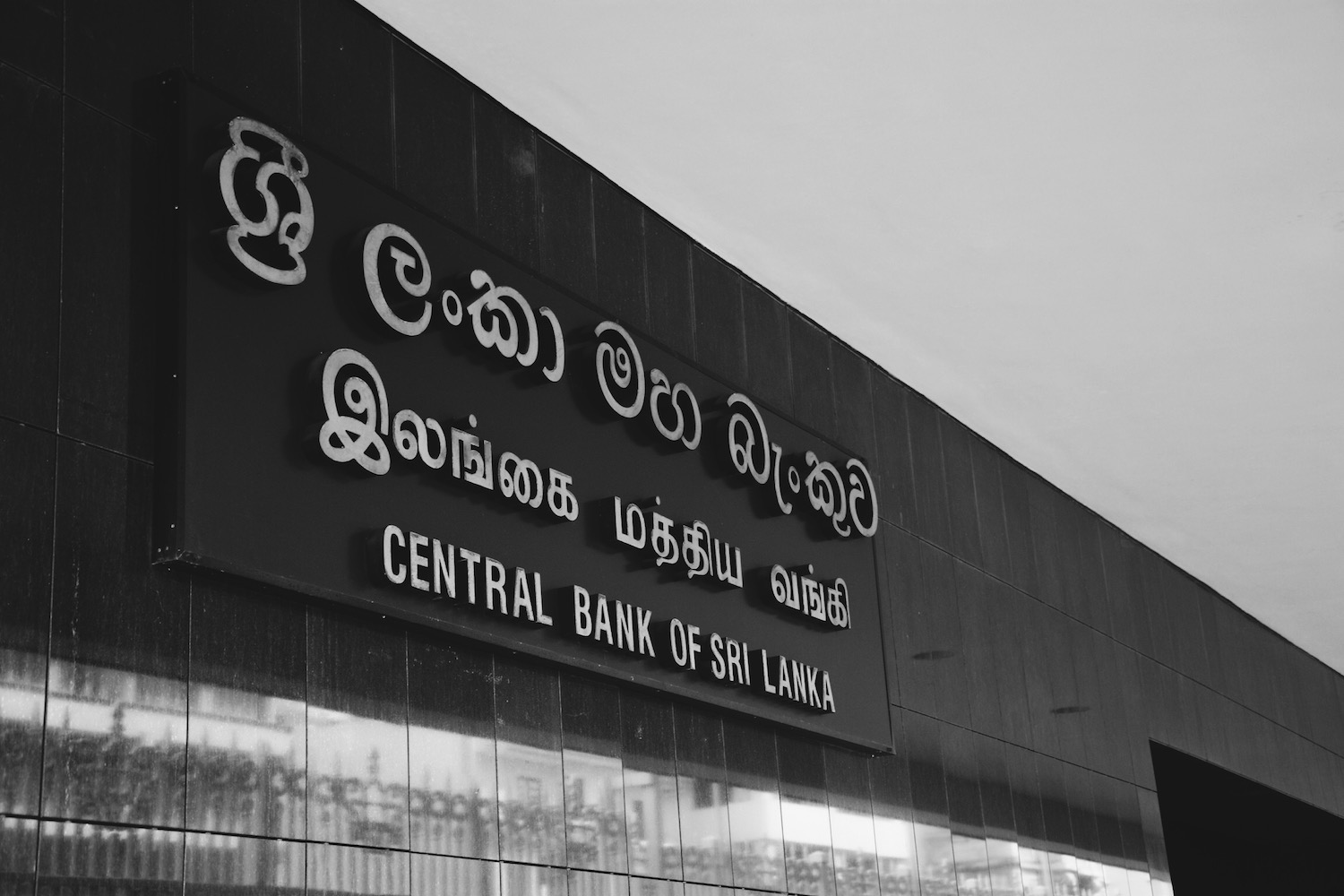
Sri Lanka is on the brink of a debt crisis. We owe the rest of the world an unprecedented Rs. 9.5 trillion. And we have to pay it all back ‒ or at least a significant portion of it ‒ with money we don’t really have. There is no way around it. (Unless, of course, Sri Lanka defaults on these loans, the consequences of which we shall get to in a bit).
Experts have suggested various ways to get out of this trap: from increasing direct taxes to gradually privatising loss-making state-owned enterprises (SOEs). The Prime Minister himself went on record recently suggesting the sale of some SOEs to the private sector – the merits of which are… up for debate, at best. The International Monetary Fund (IMF), meanwhile, has advised the government to increase taxes on the rich, a policy long advocated by economists but have yet to materialise.
The Numbers
According to the Ministry of Finance, total outstanding debt by the end of 2015 was at Rs. 8.5 trillion. That’s 76% of the GDP (at the end of 2014, this was at 70.7%) ‒ an increase of Rs. 1,112.3 billion from Rs. 7,390.9 billion in 2014. (India’s debt to GDP as at 2016 in comparison is 66.5%, while Pakistan’s is 61.8%). At the end of 2015, total debt comprised a domestic debt (internal debt owed to commercial banks and other local financial institutions) of Rs. 4,959.2 billion and foreign debt of Rs. 3,544.0 billion.
And that’s not the half of it. As revealed by Prime Minister Ranil Wickremesinghe earlier this month, loans obtained by the previous government using SOEs had not been factored into the national debt list as compiled by the Finance Ministry. Which means an additional Rs. 1.4 trillion worth of debt had been accumulated by state enterprises that never made it to the official reports.
“There is a long list, which includes the Rs. 424 billion owed by the Ceylon Petroleum Corporation, Rs. 240 billion owed by the Ports Authority, Rs. 308 billion owed by SriLankan Airlines and Rs. 236 billion owed by the Ceylon Electricity Board,” the Daily FT quoted Wickremesinghe as saying.
While it is difficult to break down the overall debt in terms of how much we owe whom, looking at data provided by the Ministry can give us a rough idea:
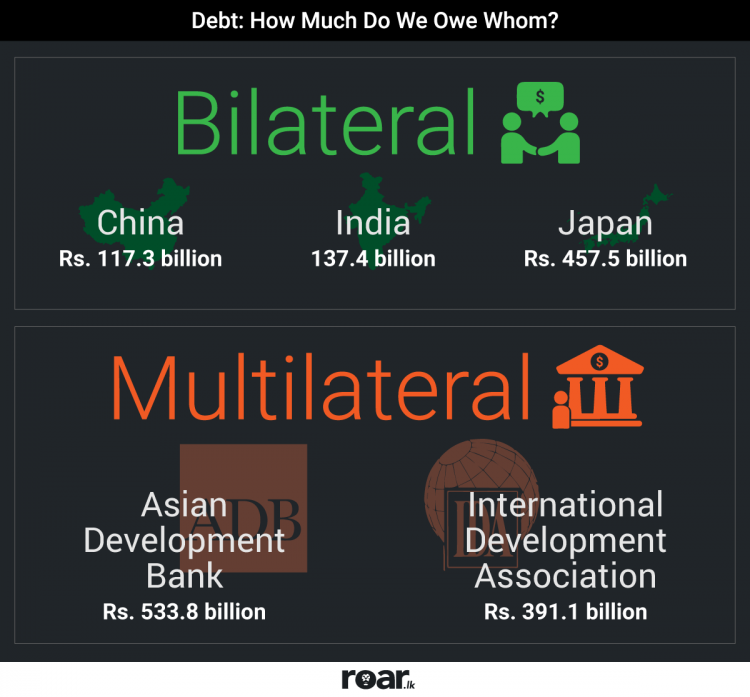
Data courtesy Ministry of Finance
Reasons
The Ministry of Finance surmises in its report that this significant surge in the debt reflects the increased public expenditure and expanded budget deficit amidst lower than anticipated revenue collection. The depreciation of the rupee against major foreign currencies is also cited as a reason for a “nominal increase” of the outstanding stocks of debt. (This nominal increase amounted to Rs. 285.1 billion).
In 2015, total debt service payments (interest and capital payments) went up to 11.8% of the GDP, compared to the 10.3% in 2014. The burden of debt servicing, according to the Finance Ministry, is expected to lessen in the medium-term with “improvements in the government revenue and the decline in the overall budget deficit together with improvements in the government debt management and Treasury cash flow operations.”
The Government had no choice but to raise taxes to increase revenue to keep the budget deficit and debt in check. (Click here for a comprehensive breakdown of VAT we published in May 2016).
Taxing The 1%
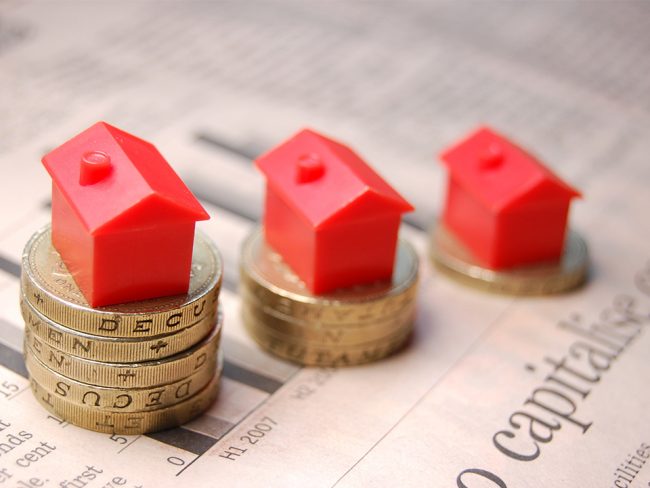
Could capital gains tax be the way forward? Image courtesy simplybusiness.co.uk
Another proposal to ease the burden was to impose capital gains tax (CGT), which was greeted by a crestfallen stock market a couple of months ago. While the Government continues to reassure the public that essential items will not be taxed, reports did, however, surface recently that VAT will be imposed on some private health services.
Economist Ahilan Kadirgamar speaking to Roar, said that capital gains tax ‒ along with other direct taxes ‒ is the progressive way forward. (VAT, by contrast, is an indirect tax imposed on goods and services, with people from all socioeconomic backgrounds paying the same price). Direct taxes, to use popular parlance, is basically a way to ensure that the so-called “1%” pays their due.
When the Government came up with the revised budget in March, said Kadirgamar, both the VAT and CGT were discussed, but “they attempted to increase the VAT, and CGT dropped out of the equation. They stopped talking about it.”
According to Economist Deshal De Mel, however, CGT will go through and likely apply to land and equity transactions.
“I’m not sure about the timing because the Government is drafting fresh legislation which may take a couple of months,” he told Roar.
Over 80% of our taxes are currently indirect taxes, which, according to Kadirgamar, means that a big chunk of the burden falls on the bottom rung of society.
“There is also a class character to the indirect taxes. You need to have a progressive tax system so that those who earn more or make more profits pay a large share of taxes. But in Sri Lanka, there are only about 20% direct taxes,” he said. (Direct taxes also include income tax and corporate taxes).
“The PM said in his November statement that they will take steps to move away from indirect tax to bring it down to something like 60%. But in the revised budget, they increased the VAT. The World Bank, the IMF, and everybody else recognise that we have extremely low revenue. This is why CGT is important, but they’re dragging their feet on it,” he added.
In a fresh development, the IMF recommended this week a “stronger shift to direct taxes as well as greater transparency of revenue collection and expenditure” in the upcoming budget to be tabled in Parliament on November 10. IMF officials have advised that the current emphasis on indirect taxes should be reduced in Budget 2017.
De Mel, speaking to Roar, pointed out that, in Sri Lanka, the issue is not the rates of taxes but the collection.
“The focus needs to be on improving tax collection by making better use of information systems, simplifying tax payment procedure, and creating a simple, transparent tax structure, minimising room for discretion of tax officers, and increasing punitive measures for those who still avoid tax payments. Investors wouldn’t mind paying tax as long as it is fair and an easy process and they receive concomitant services from the Government such as good infrastructure and services,” he said.
(Im)balance Of Payment
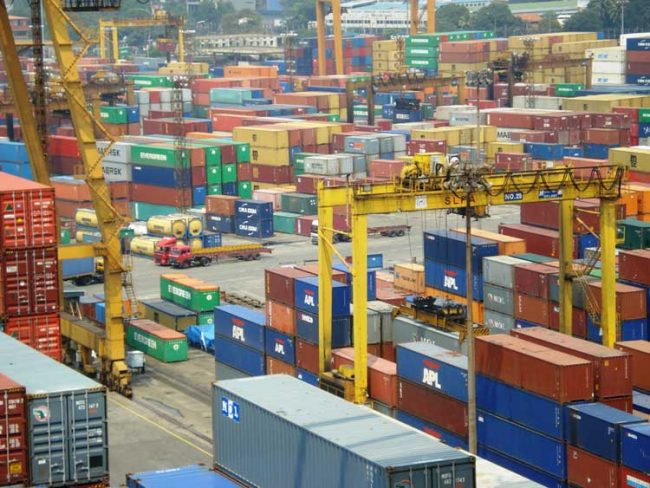
Sri Lanka simply didn’t have enough foreign exchange to pay for imports. Image courtesy: portcom.slpa.lk
According to Kadirgamar, the crisis faced in March was really a balance of payment crisis. We just didn’t have enough foreign exchange to pay for our imports. (Our exports are only about 55-60% the value of our imports). Even the remittances sent into the country by Sri Lankans working in the Middle East were falling short.
It’s really about foreign reserves and foreign exchange. Any debt we incur in foreign currency also has to sit on the current account deficit (or external account). This includes not only government loans (sovereign bonds, various bilateral loans, etc.) but also the imports coming into the country.
The import of vehicles late last year, for example, had a tremendous impact on our import bill.
“Very poor management of our external account,” as Kadirgamar puts it.
The external account has a government portion to it as well as a private portion. One way to ensure that there is no external account crisis ‒ at least according to Kadirgamar ‒ is to put restrictions on imports by increasing tariffs.
“Discourage further imports [of non-essential items], because we don’t have the foreign reserves to pay for it,” he said.
The other option is to take more loans in dollars and pay off the existing loans ‒ either private or public loans, which appears to be the solution we’re going for.
IMF Loan
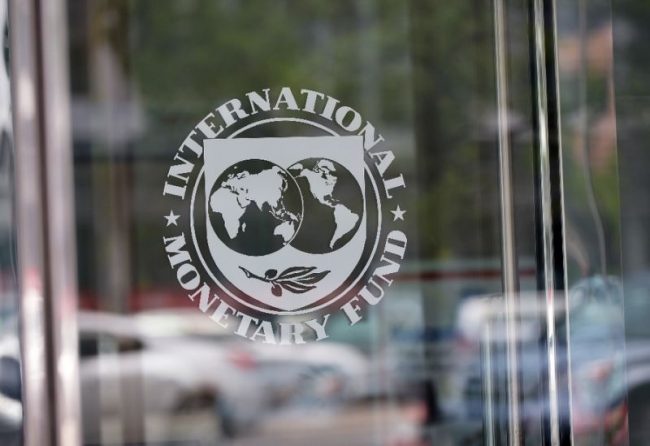
IMF loan – a band-aid solution? Image credit: AFP/Mandel Ngan
In July’s agreement with the IMF, Sri Lanka was promised a USD 1.5 billion extended fund facility (EFF), which is peanuts compared to our import bill that comes up to about USD 20 billion.
“We haven’t gotten out of the debt trap, but [the IMF loan] has allowed us to borrow more. Which is going to come back to haunt us. We’re just delaying the crisis,” said Kadirgamar.
Then there is the domestic debt vs. foreign debt issue. The former is not as serious as the latter. A majority of Sri Lanka’s debt is domestic.
“Even the US has a huge amount of debt, but that’s in their own currency. If the Federal Reserve wants, they can print money and pay it back,” said Kadirgamar.
But, as most economists agree, printing money can have unintended consequences, often leading to an increase in inflation, among other things.
Worst Case Scenario
Sri Lanka, according to Kadirgamar, could default on its loans if our foreign debts lead to a balance of payment crisis. A default could result in an erosion of investor confidence, with the economy at a standstill. An undesirable outcome, to say the least.
The crisis that led to the IMF agreement in June, reiterated Kadirgamar, was really a balance of payment/external account matter. One of the conditions imposed by the IMF was to reduce Sri Lanka’s budget deficit. The fact of the matter, however, is that budget deficit and external account deficit are two very different things.
“We have to increase revenue, but solving budget deficit is not going to solve the external account problem,” said Kadirgamar.
To Privatise Or Not
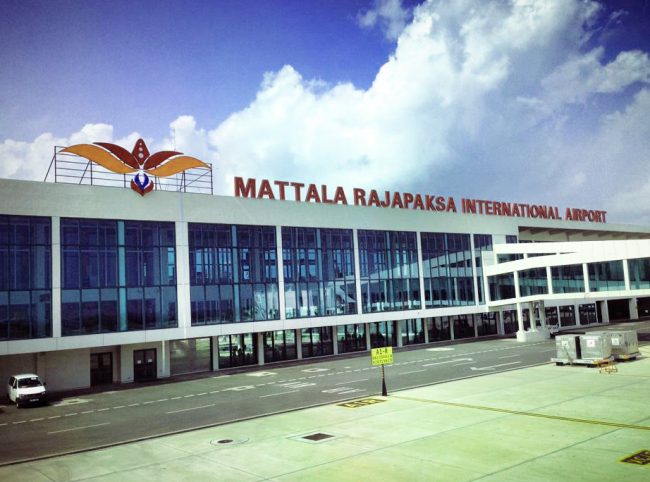
What do we do about loss-making, state-owned entities? Image courtesy colombogazette.com
Earlier this month, Prime Minister Wickremesinghe revealed plans to privatise loss-making SOEs.
“Most State corporations are loss-making or generate low profits. On the other hand, the heavy debt burden prevents the country from moving forward,” the Premier told the media.
Kadirgamar, however, warned of the dangers of knee-jerk reactions like haphazardly privatising SOEs ‒ especially those that provide essential services like electricity, water, and fuel. What needs to be done, instead, is to ensure better management. Electricity, for example, can continue to be provided to low-income families at current prices, while prices may be increased for consumers that use more than a certain number of units.
Another condition on the IMF agreement is to change SOEs prices to reflect market prices.
“To me this is problematic. The state’s role is to ensure that people are able to afford the basic services. Beyond that they can put a higher price,” said Kadirgamar.
The Government needs to formulate a clear policy by objectively looking at reasons as to why SOEs go into debt. Ad hoc privatisation may prove to be more hindrance than help. While the sale of an SOE to the private sector could, in the short term, provide some much-needed breathing space as a result of the immediate injection of wealth into the economy, in the long run, the people, especially those that depend on state subsidies, could suffer.
“The fact that SOEs are making losses on paper is not an issue. WHY are they making a loss? Are they making a loss because they’re giving subsidised electricity to the bottom sections of society? In which case, there needs to be redistribution. Or is it because they’re inefficient?” said Kadirgamar.
Privatisation of SOEs as a solution needs to be looked at on a case-by-case basis, he said. Loss-making entities that are in no way essential (such as certain vanity projects carried out by the previous government) can be privatised. But there needs to be a more nuanced discourse on this among the public.
De Mel, meanwhile, points out that the issue of state ownership of assets and state enterprise is a politically loaded one. When the UNP government of 2002-2004 attempted to divest some state assets and reduce the size of government, he recalled, it was used by the opposition at the time (led by former President and then Opposition Leader Rajapaksa) as a major electoral issue against the UNP.
“For a privatisation to be viable, it needs to be in an industry where there is robust competition and the new ownership needs to have a free hand in management. Most importantly, the government must have an excellent communication strategy in explaining the public benefits that would arise from this and also communicating with direct stakeholders such as employees,” he said.
The oft-cited example of Sri Lanka Telecom, whose successful private-public partnership (Global Telecommunications Holdings N.V. of Netherlands currently owns a 44.98% stake in SLT) continues to yield results. De Mel is of the opinion that this can be emulated elsewhere.
“For some SOEs you don’t need to sell the entire company ‒ divesting a stake (say 25% to 50%) can be done without compromising government ownership whilst bringing in private capital, management expertise, technology etc. ‒ a good success story on these lines is SLT. The key here was the competition that was introduced in the telecom sector along with the sale of a share of the company. The Government still owns slightly more than 50% of SLT but in terms of profitability and service delivery the company is unrecognisable compared to two decades ago,” he said.
But can privatisation of essential public services (such as water and electricity) be done without hurting the public in the long run?
According to De Mel, it can. “Yes, absolutely. Even in electricity, some of the generation of power today is private ‒ mini hydros, wind, and now solar are cases in point. The key again is competition ‒ as long as there is robust competition, the public should benefit through better pricing and service standards. In some industries (natural monopolies) there is limited scope for competition and in such cases you require smart, unobtrusive regulation to ensure pricing is fair to consumers and that service standards are met,” said De Mel.
While it goes without saying that the Government cannot afford to get carried away with privatising SOEs in a desperate attempt to get out of the debt trap, something has to be done.
So What Can Be Done?
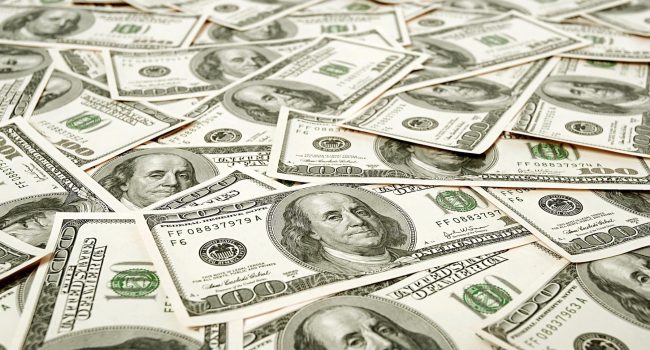
Priority #1: meet our short-term external debt payments. Image courtesy: The Guardian
Sri Lanka’s state structure, says De Mel, has evolved into a giant that consumes almost all of its revenue in just its recurrent expenditure (salaries/pensions, interest, and transfers/subsidies). Therefore we have had to borrow to meet almost all state investment needs, first for the war and more recently for infrastructure.
“The immediate priority is to meet our short-term external debt payments ‒ for this, we need a credible fiscal consolidation plan which commits to shoring up revenue and rationalise expenditure to keep the fiscal deficit in check. This would enable the country to access global capital markets and roll over short-term debt payments. The 2017 budget will be a crucial litmus test,” said De Mel.
“In the long term, Sri Lanka needs to shift its state structure from one that employs 1.3 million people, owns and runs 245+ business enterprises, and dominates certain key industries (eg. State banks still control over 40% of banking sector assets) ‒ to one that focuses on fixing market failure through smart regulation, provides services that are under-provided by the market, and addressing social justice issues without tampering with the price mechanism. Such a government would consume less resources, and create a lower tax burden on the public,” he added.
What is clear is that there is no immediate, clear-cut solution. Whatever course of action the Government takes now in response is only going to show results years down the line. It doesn’t have to be so bad, however. With the right fiscal policy and appropriate corrective measures in place, chances are we may just get out of this mess alive.
Featured image courtesy: 123rf.com

